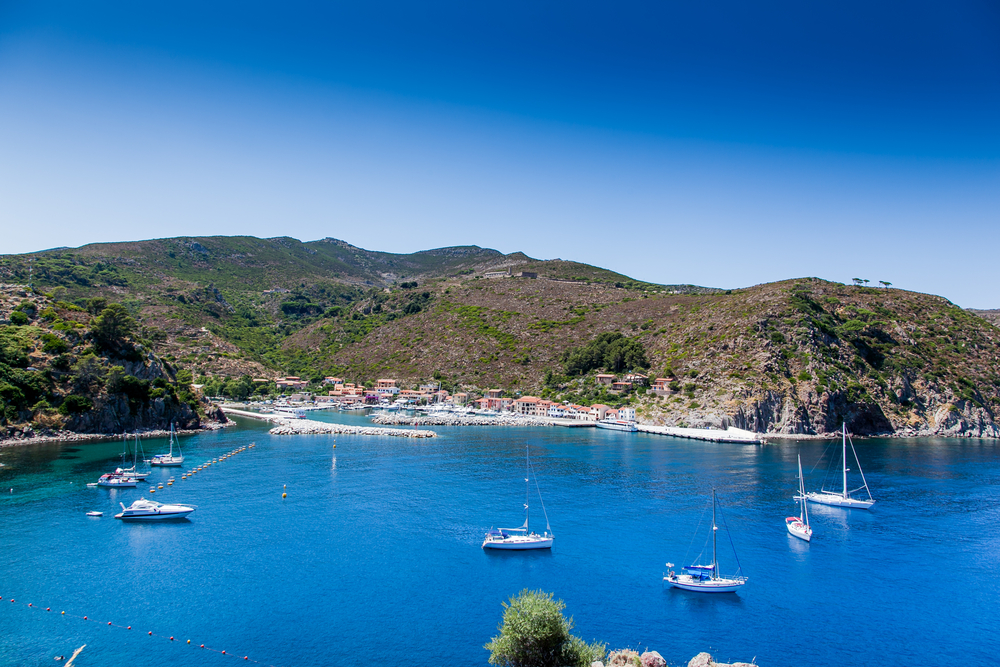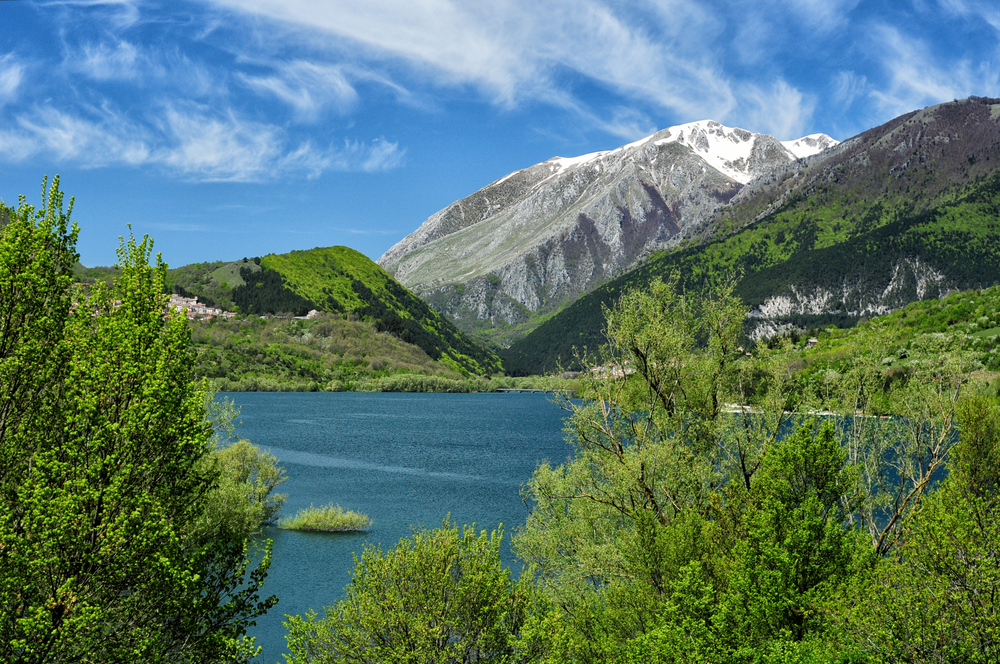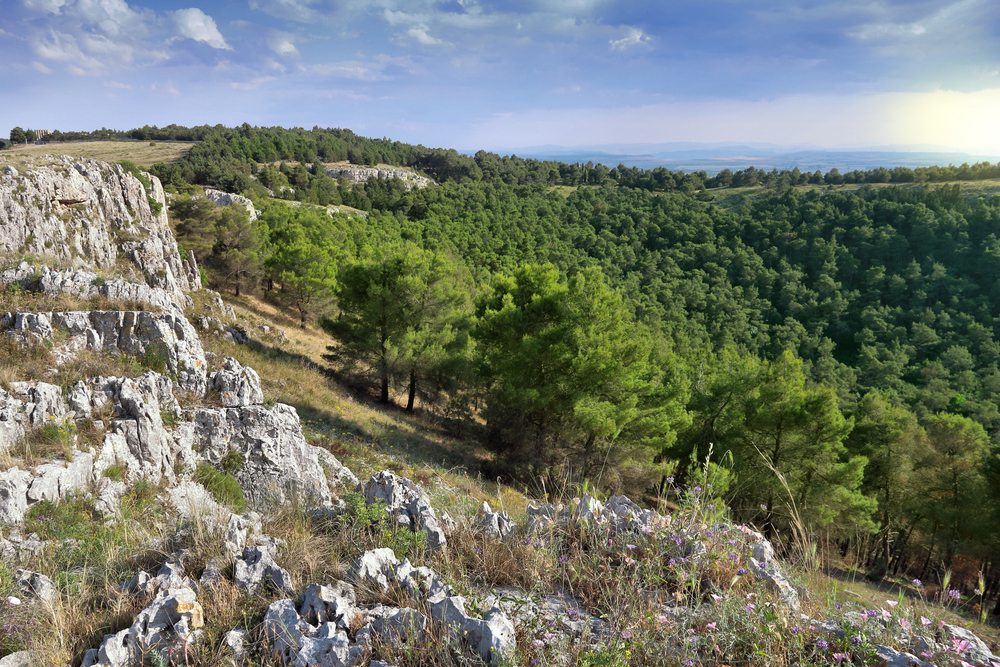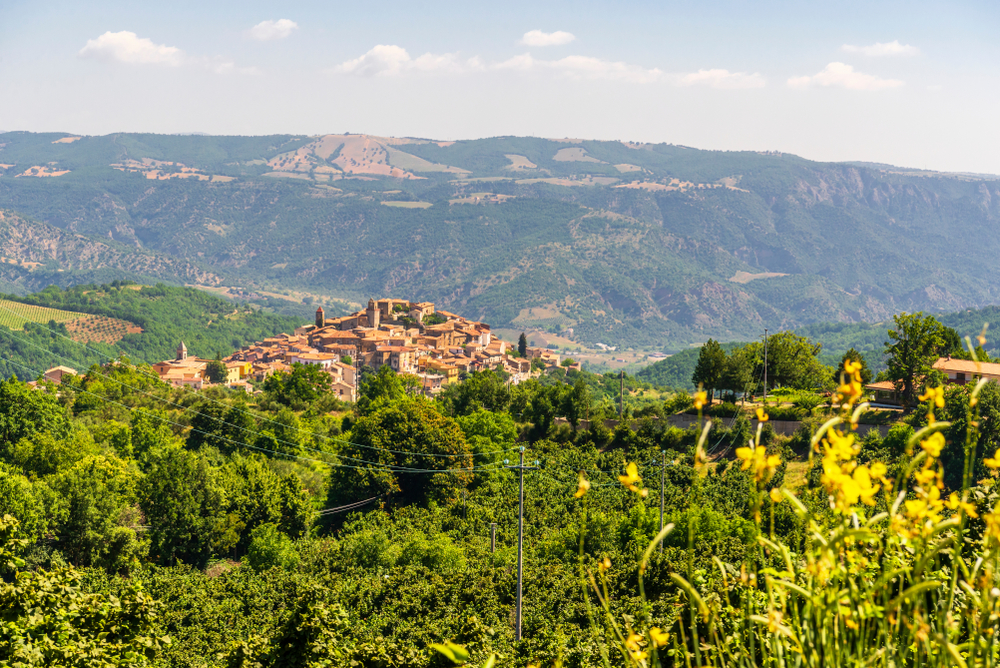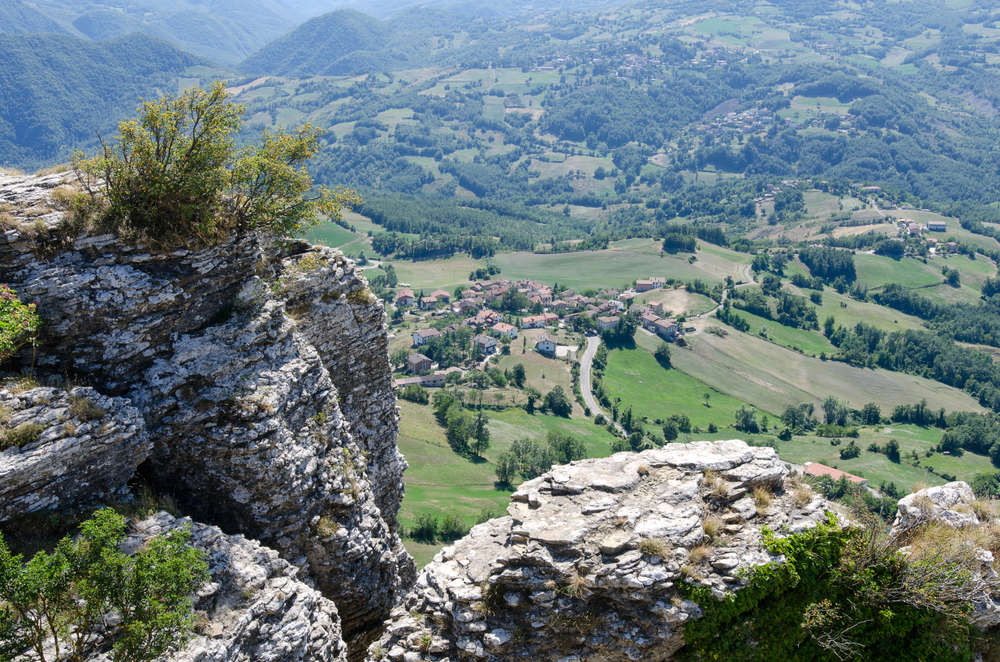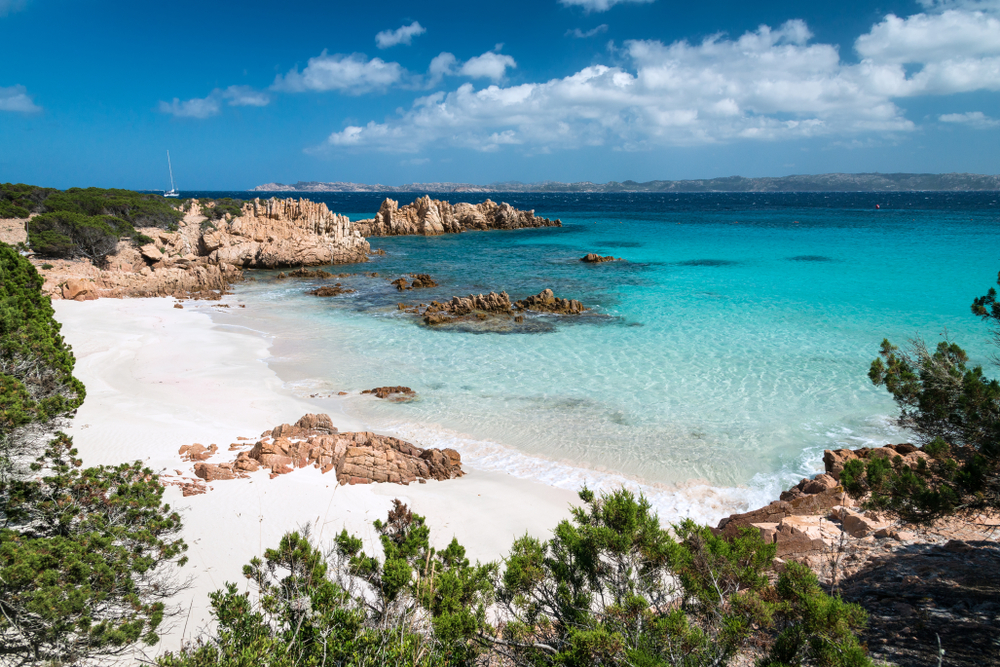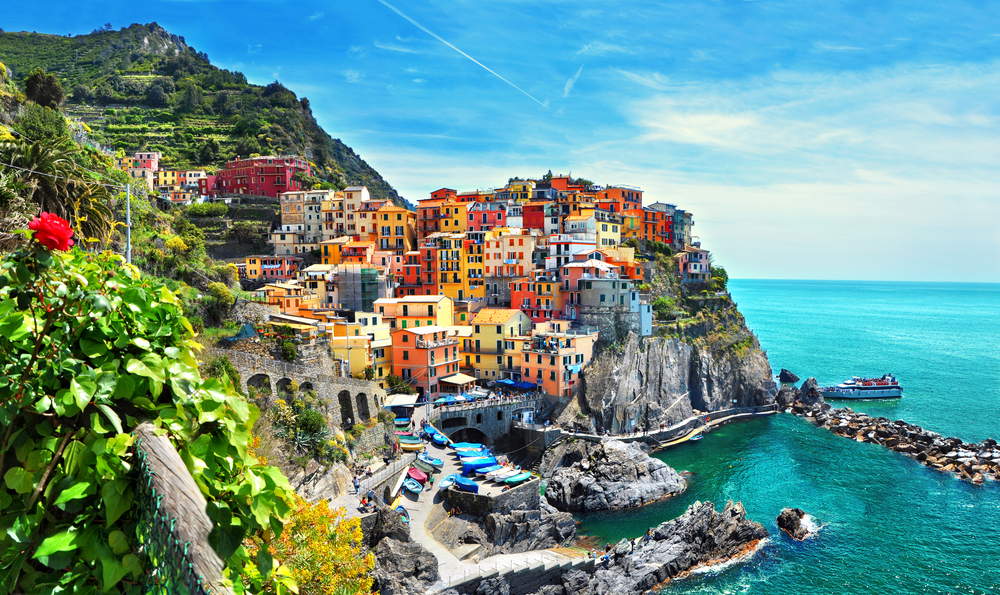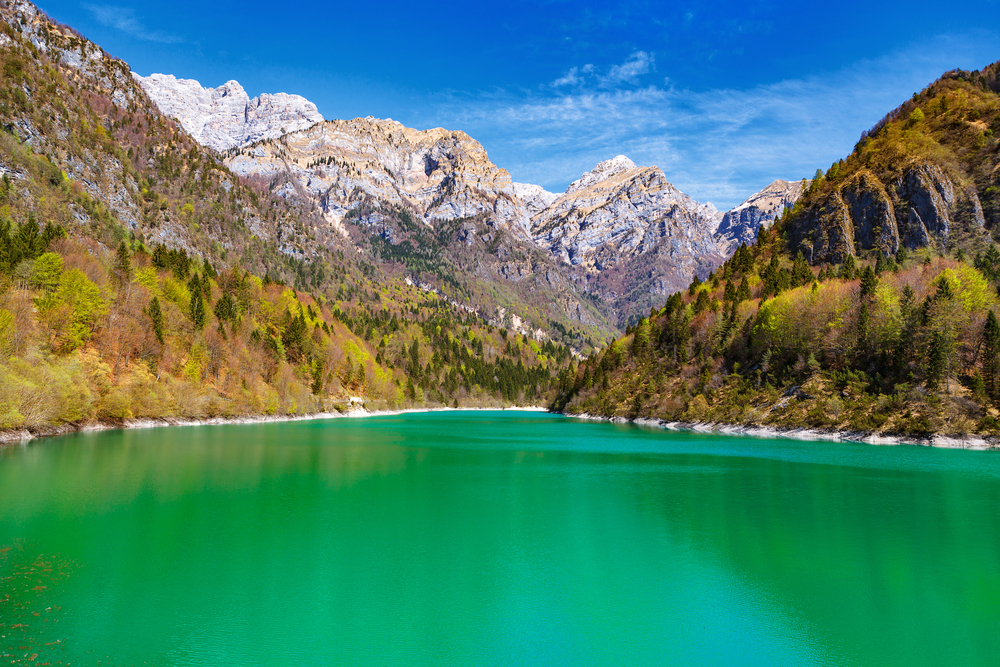Arcipelago Toscano Overview
Arcipelago Toscano National Park, or Parco Nazionale Arcipelago Toscano in Italian, is a protected area in the Tyrrhenian Sea off the coast of Tuscany, Italy.
Covering approximately 296 square miles (766 square kilometers), the park encompasses seven major islands—Elba, Giglio, Capraia, Montecristo, Pianosa, Giannutri, and Gorgona—along with numerous smaller islets.
The park is the largest marine national park in Europe and plays a crucial role in preserving the biodiversity of the Mediterranean region. Situated between the Ligurian and Tyrrhenian Seas, the archipelago boasts a fascinating mix of landscapes, from rugged cliffs and dense Mediterranean scrubland to sandy beaches and crystal-clear waters.
The park’s terrain is diverse, shaped by both volcanic and sedimentary formations. Elba, the largest and most famous island, features mountainous landscapes dominated by Monte Capanne, which rises to 3,343 feet (1,019 meters). The island’s varied topography includes lush forests, granite cliffs, and golden beaches. Capraia, with its volcanic origins, is characterized by steep rock formations and dramatic coastal scenery.
Montecristo, made famous by Alexandre Dumas’ novel The Count of Monte Cristo, is a remote and wild island, largely inaccessible to visitors to protect its fragile ecosystem. Giglio, known for its picturesque village and granite hills, offers a mix of rocky coves and Mediterranean vegetation. Pianosa is relatively flat, with limestone formations and a unique landscape that sets it apart from the other islands. The smaller islands, such as Giannutri and Gorgona, also feature pristine coastlines and rich marine environments.
The park is home to an impressive array of wildlife, both on land and in the surrounding waters. The Mediterranean scrub provides habitat for wild boar, mouflon, and a variety of reptiles, including the endemic Tyrrhenian wall lizard. Birdwatchers can spot peregrine falcons, Audouin’s gulls, and Scopoli’s shearwaters, which nest in the cliffs and rocky outcrops.
The marine environment is equally rich, with waters teeming with dolphins, sea turtles, and occasionally even whales. The seagrass meadows of Posidonia oceanica, a vital marine ecosystem, support an abundance of fish and other marine life, making the park a prime destination for snorkeling and diving.
Among the park’s many highlights, Elba’s beaches and hiking trails draw visitors seeking both relaxation and adventure. The Napoleonic heritage of Elba, where Napoleon was exiled in 1814, adds a historical element to the island’s attractions. Capraia’s untouched nature and volcanic landscapes make it a favorite for hikers and nature enthusiasts, while Giglio’s charming port town and clear waters attract those looking for a mix of culture and seaside beauty.
Montecristo, though rarely accessible, remains an intriguing and mysterious part of the park, known for its strict conservation regulations. Pianosa, with its history as a former penal colony, offers guided tours that explore its past while showcasing its unique natural beauty.
Visitors can engage with the park in numerous ways, from hiking and mountain biking along the scenic trails of Elba and Giglio to diving and snorkeling in the clear waters surrounding the islands. Sailing and kayaking provide opportunities to explore hidden coves and sea caves, while birdwatching excursions highlight the park’s diverse avian population.
Cultural experiences, including visits to historic sites such as Napoleon’s residences on Elba or the ancient Roman ruins on Giannutri, enrich the visitor experience. Strict conservation policies limit access to certain areas, ensuring the long-term protection of the park’s fragile ecosystems.
Despite its protected status, the park faces conservation challenges, including the impact of tourism, climate change, and invasive species. Efforts to control visitor numbers, especially on delicate islands like Montecristo, have been largely successful in minimizing human impact.
Marine conservation programs work to preserve the delicate balance of underwater ecosystems, while reforestation and habitat restoration initiatives aim to protect native flora and fauna.
The park’s management collaborates with local communities to promote sustainable tourism, ensuring that the beauty and biodiversity of the Tuscan Archipelago are preserved for future generations.








































































